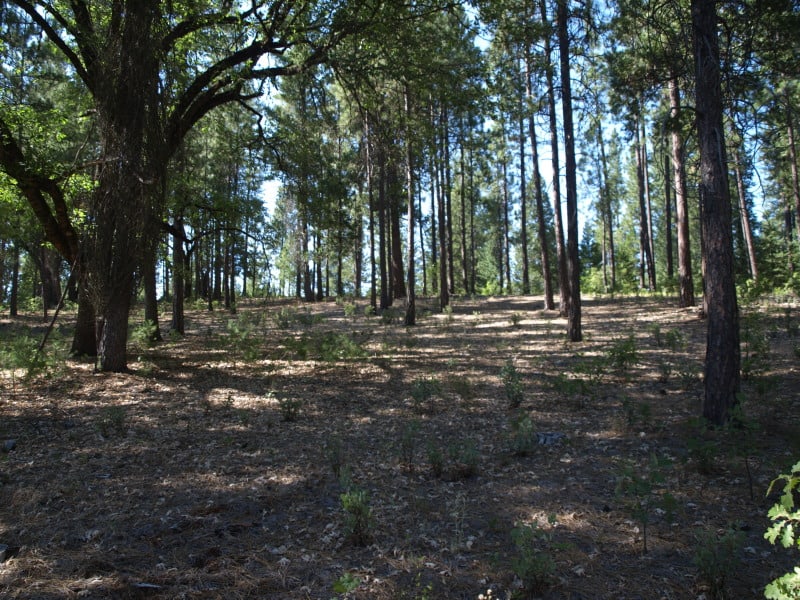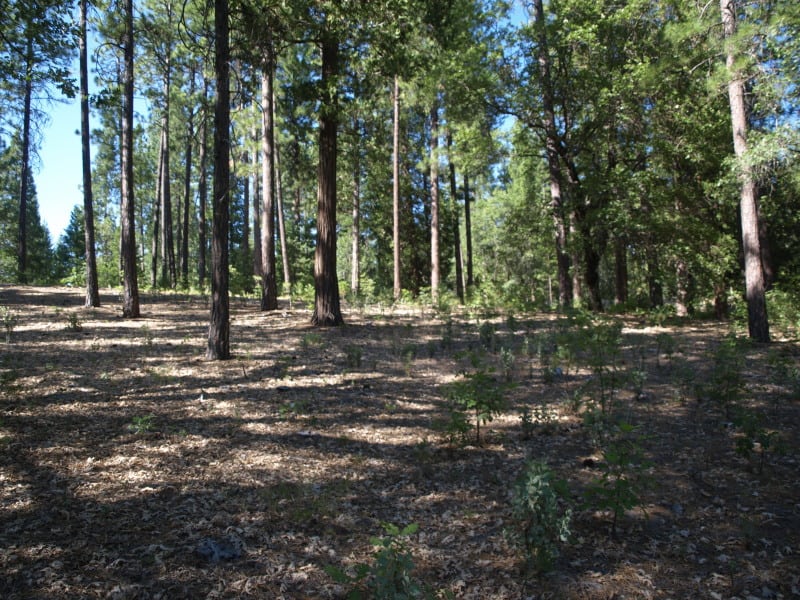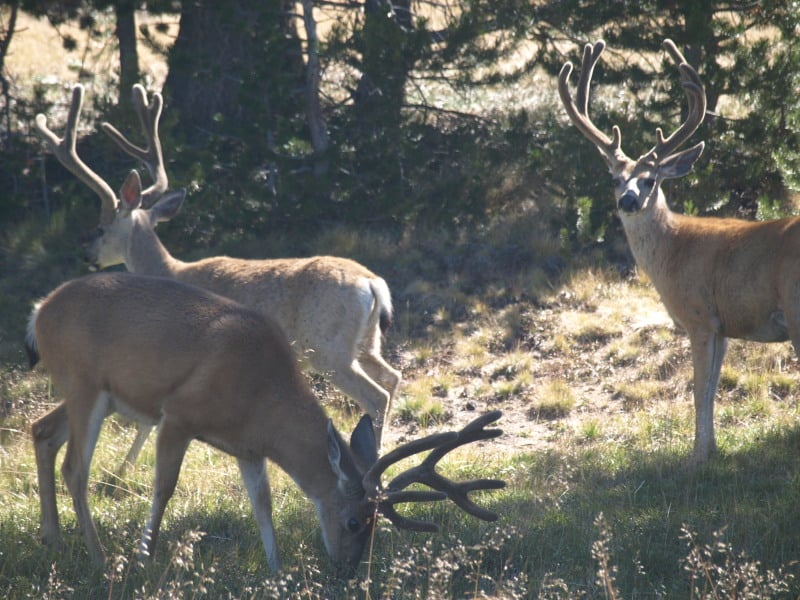While driving to Yosemite the other day, I passed through the Stanislaus National Forest on California Highway 120. I’ve seen this project for several years, and decided to stop and see how it looks a few years after completion. These strips are adjacent to the highway for about 6 miles, on both sides of the road. The previous condition had thickets of “whippy” pines, and manzanita brush, making groundwater very scarce at this 3000-4000 foot elevation. I did see some “old growth” manzanita “stumps”, and it looks like very little commercial-sized timber ( over 10″ dbh) was removed.
I did see where the manzanita was “stump-sprouting” but, their growth will be limited in the shaded areas. Certainly, a mosaic of brush is inevitable but, it appears that the focus of this project is to reduce fuels along the main source of ignitions. It also provides a safe corridor where emergency vehicles can get to where they need to go. This project also seems to give forest development a nice “nudge”, reducing the amount of time needed for larger trees to grow. It will also safely allow the use of prescribed fires, to control future “fuels”.
Now, I am not sure if this was a “Service Contract”, or a part of a larger timber sale. It really doesn’t look like they removed enough value to pay for the non-commercial tasks. However, this is a good example of necessary things that should be paid for with sustainable forest management.
OK, OK….. I’ll post a picture from Yosemite!
I saw no less than 30 bucks around Tuolumne Meadows, including an 8 or 9 pointer! Pics on my page!
www.facebook.com/LarryHarrellFotoware



Amen
Can’t disagree or frown on this project, or any other similar projects here in the west. However they did this, it looks great and should provide some added protection from roadside, man-made ignitions. Good job, Larry.
Ed: We are mostly in complete agreement. The only thing I’d point out is the best maintenance for these trees and associated vegetation would be regularly planned roadside man-made ignitions, in addition to any subsequently planned pruning, planting, salvage and thinning projects. That would not only remove the need and costs for such “protection” from wildfire, but also continue to maintain (and protect) the safe and beautiful forest environment that Larry has depicted here.
Gil: I’m in agreement with you, too. Not sure at all about this “stand-by” time that is getting paid. There is a lot of work that needs doing, and the best way to keep a tool sharp is to keep using it at a peak efficiency.
Most Excellent – and as Ed says fire risk is reduced. In the summer of 1964 on the Shasta Trinity we did this sort of work when we weren’t fighting fires. My first time out west, a young buck with a year of forestry training under my belt – I was in heaven.
It looks like they are still learning how to implement variability. Too many evenly spaced trees for my taste. It’s a learning process.
There is PLENTY of variability OUTSIDE of the narrow road corridor!! Would you like fewer oddly-spaced trees?!? If you haven’t noticed, the trees here are thin and weak, with drought stress impacting their vigor and condition. Basically, this is a “shaded fuelbreak”, and thickets and brushfields just aren’t desirable along the highway that serves as a gateway to Yosemite Valley.
That being said, just up the road are areas that burned in 1987. A friend of mine laid out the herbicide application units, and he was proud of the patches he excluded from the project, knowing full well that they would not return to forests for decades. Twenty years later, those areas still persist as brushfields. There is no lack of persistent brush.